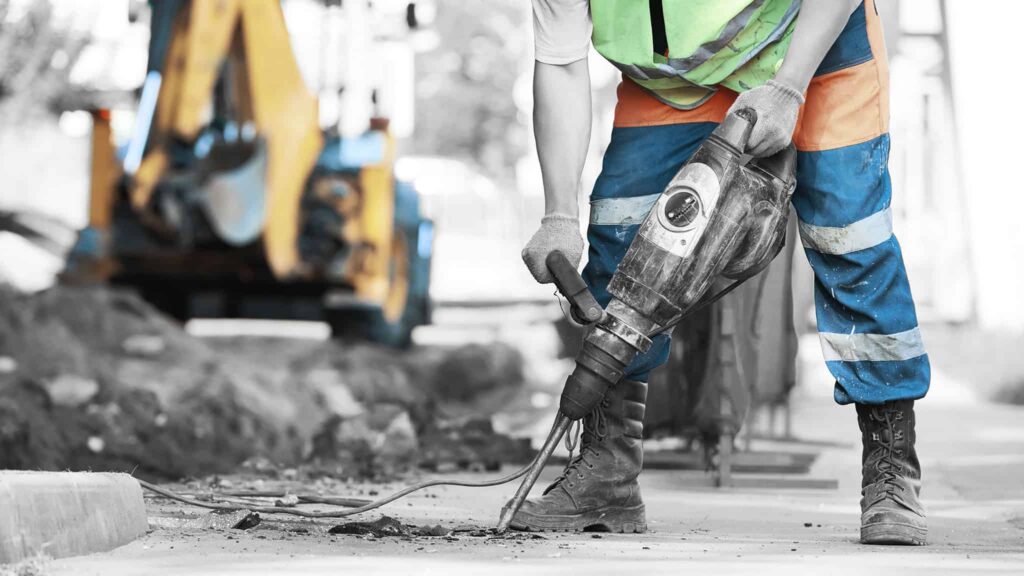Noise Pollution and Environmental Impact in Construction: Regulations and Best Practices in Canada
Construction projects are vital for urban growth and infrastructure development, but they often come with negative side effects, including noise pollution. Noise from construction activities—generated by heavy machinery, demolition, excavation, and transportation—can disturb nearby communities and wildlife, leading to health issues and environmental damage. In Canada, noise pollution from construction is regulated by federal, provincial, and municipal governments to protect public health, reduce environmental impacts, and ensure construction projects are managed responsibly. This article explores the environmental and health impacts of noise pollution, the regulations governing construction noise, and best practices to mitigate noise pollution during construction projects.

The Environmental and Health Impacts of Noise Pollution
Noise pollution is more than just a disruption to daily life—it can have significant consequences for both human health and the environment.
1. Health Impacts on Humans
Continuous or high levels of noise can lead to various health problems, including:
- Hearing loss: Prolonged exposure to loud noise can damage hearing, especially for construction workers who are frequently exposed to machinery.
- Stress and anxiety: Persistent noise can cause mental health issues, including stress, anxiety, and irritability.
- Sleep disturbances: Noise pollution during nighttime construction can disturb sleep patterns, leading to fatigue and decreased productivity.
- Cardiovascular issues: Long-term exposure to high levels of noise can contribute to heart-related conditions, including hypertension and heart disease.

2. Environmental Impacts
Noise pollution can also disrupt ecosystems, particularly when construction occurs near wildlife habitats or natural areas:
- Disruption of wildlife behavior: Noise can interfere with animals’ communication, mating habits, and migration patterns. Some species may abandon habitats due to persistent noise disturbances.
- Impact on ecosystems: In natural environments, noise can change predator-prey dynamics, cause stress in wildlife, and reduce biodiversity in areas close to construction zones.
Noise Pollution Regulations in Canada
Noise pollution in construction is regulated at multiple levels—federal, provincial, and municipal—to ensure that public health and the environment are protected. These regulations set limits on acceptable noise levels, specify the hours when construction can occur, and mandate the use of noise mitigation strategies.

1. Federal Regulations
Although construction noise is typically regulated at the local level, some federal laws and standards influence how noise is managed across Canada.
- Canadian Environmental Protection Act (CEPA): While CEPA primarily focuses on environmental protection from pollutants, it may be used to regulate construction projects with significant environmental impacts, including noise, especially if they affect wildlife or protected areas.
- Occupational Health and Safety (OHS) Regulations: OHS regulations, including those under the Canada Labour Code, limit noise exposure for construction workers. The regulations mandate that workers are not exposed to noise levels above 85 decibels (dB) over an eight-hour period without adequate hearing protection. Employers are required to provide protective equipment and ensure safe noise levels on construction sites.
2. Provincial and Territorial Regulations
Each province and territory in Canada has its own noise control regulations, which often address both occupational noise exposure and public noise impacts.
- Ontario: Ontario’s Environmental Protection Act (EPA) allows municipalities to set their own noise pollution standards. Additionally, Ontario’s Occupational Health and Safety Act (OHSA) includes provisions for controlling noise exposure in construction, requiring employers to implement noise-reduction measures and provide hearing protection for workers.
- British Columbia: BC’s Workers Compensation Act regulates workplace noise exposure and requires construction companies to monitor noise levels on site. Provincial legislation also encourages municipalities to adopt noise by-laws that limit construction noise in residential areas.
- Quebec: Under Quebec’s Environmental Quality Act, large-scale construction projects must undergo environmental impact assessments, which often include noise pollution management plans. The province also enforces strict noise limits for construction activities near sensitive areas, such as schools, hospitals, and wildlife habitats.
3. Municipal Noise By-laws
Municipal governments in Canada are responsible for setting local noise by-laws that regulate construction activities. These by-laws often specify acceptable noise levels, work hours, and noise mitigation requirements for contractors.
- Toronto: Toronto’s noise by-laws limit construction activities to specific hours—typically between 7:00 AM and 7:00 PM on weekdays, with more restrictive hours on weekends and holidays. The city also imposes maximum permissible noise levels, especially in residential areas.
- Vancouver: Vancouver enforces strict noise limits for construction activities, with maximum allowable decibel levels depending on the area and time of day. The city also requires noise permits for projects expected to generate significant noise outside of normal working hours.

Best Practices for Mitigating Noise Pollution in Construction
To comply with regulations and minimize the negative impact of noise pollution, construction companies must adopt best practices for noise management. These practices not only reduce the disturbance to local communities but also create safer work environments for construction personnel.
1. Use Quieter Equipment
One of the most effective ways to reduce noise pollution is by using modern, quieter equipment. Manufacturers now produce construction machinery designed to operate at lower noise levels.
- Electric machinery: Electric construction equipment, such as electric excavators and generators, produces less noise than traditional diesel-powered machines.
- Regular maintenance: Proper maintenance of machinery ensures that engines and other components operate efficiently and quietly. Worn-out or malfunctioning parts can increase noise levels, so regular servicing is critical.
2. Erect Noise Barriers
Noise barriers can help block or absorb sound from construction activities, reducing the impact on surrounding areas. Temporary noise barriers are particularly effective in urban environments where construction sites are close to residential or commercial properties.
- Acoustic panels: These sound-absorbing barriers can be placed around the construction site to minimize noise transmission.
- Enclosures: Noisy equipment, such as generators or compressors, can be enclosed in soundproof structures to reduce their noise output.
3. Limit Construction Hours
Scheduling construction activities during times when they will cause the least disruption is another key strategy for managing noise pollution. Most municipalities restrict construction to daytime hours, when the impact of noise is less disruptive.
- Avoid nighttime work: Limiting construction activities to daytime hours, typically between 7:00 AM and 7:00 PM, reduces the likelihood of disturbing nearby residents’ sleep or daily routines.
- Coordinate schedules: By planning activities that produce the most noise during permissible hours, contractors can minimize complaints and avoid regulatory violations.

4. Monitor Noise Levels
Noise monitoring systems can track decibel levels on-site in real-time, helping contractors ensure compliance with local noise regulations and adjust activities when necessary.
- On-site noise meters: Portable noise meters allow project managers to measure sound levels at various points on the construction site and identify areas where noise exceeds permissible limits.
- Remote monitoring: Some larger projects use remote noise monitoring systems to continuously track noise levels and alert workers when noise exceeds set thresholds.
5. Engage with the Community
Open communication with local residents and businesses can help alleviate concerns about construction noise and build goodwill within the community.
- Notify residents in advance: Providing notice of upcoming noisy activities allows residents to prepare and voice any concerns ahead of time. This can include distributing flyers, sending emails, or holding community meetings to explain the project timeline and noise mitigation strategies.
- Designate a contact person: Appointing a liaison to handle noise complaints and answer questions from the community fosters trust and ensures that concerns are addressed promptly.
6. Implement Quieter Construction Techniques
In some cases, it may be possible to adopt alternative construction methods that produce less noise.
- Hydraulic tools: Hydraulic equipment, such as hydraulic breakers, generates less noise than traditional pneumatic tools.
- Vibration piling: For foundation work, vibration piling produces less noise than traditional impact hammering, making it a more suitable option for noise-sensitive areas.
Conclusion
Noise pollution from construction projects can have far-reaching effects on human health, community well-being, and the environment. To mitigate these impacts, Canada has implemented noise regulations at the federal, provincial, and municipal levels, ensuring that construction activities are managed responsibly. By following best practices, such as using quieter equipment, erecting noise barriers, and limiting construction hours, contractors can reduce the environmental and social impact of noise pollution, ensuring compliance with regulations and fostering positive relationships with the communities they serve.
